ECV1
First displayed at the Bologna Motorshow in 1986, the ECV1 (Experimental Composite
Vehicle) was a composite technology concept car testing the use of carbon, kevlar, thermosetting and thermoplastic resins,
glassfibre and honeycomb in car production. It was also considered Lancia's prototype Group S car (a formula which never came to fruit).
It was a further development of the S4, featuring the same basic design, with many of the components now made from
composites, including the main, load bearing part of the body. Other composite parts included the wheels (8x16" wheels weighing only 6kg !) and the propshaft.
It was powered by a 1759cc twin turbo (two KKK units) engine producing 600bhp @ 8,000rpm using a new design known as "triflux" where the two turbochargers were used
sequentially depending on the engine speed (see below).
An overall weight of 930kg was achieved.
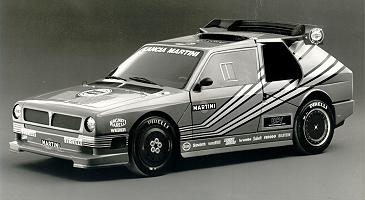 |
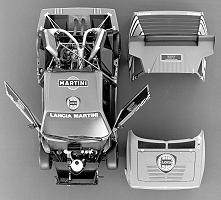 |
ECV2
The wheelbase was 2440mm, the tracks (front/rear)
1500mm/1520mm and kerb weight 910kg.
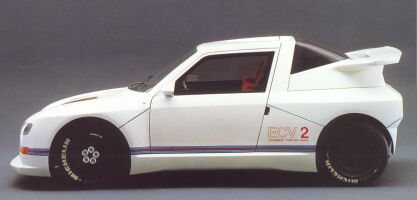 The ECV2 was a further development of the theme, with an all new bodywork which
was aerodynamically optimised, the major change being the relocation of
the engine coolant and lubricant radiators to the front of the car. The
body construction continued the theme of the ECV1, using aluminium honeycomb,
carbon fibre, glass fibre and kevlar in various positions. The weight distribution
was also improved with respect to the previous model.
The ECV2 was a further development of the theme, with an all new bodywork which
was aerodynamically optimised, the major change being the relocation of
the engine coolant and lubricant radiators to the front of the car. The
body construction continued the theme of the ECV1, using aluminium honeycomb,
carbon fibre, glass fibre and kevlar in various positions. The weight distribution
was also improved with respect to the previous model.
The engine remained 1759cc with two turbochargers using the triflux system. The intercoolers also adopted water
cooling. The drive system remained essentially as in the S4, with some
improvements, a three-differential design with 30% of the torque at the
front and the remaining 70% at the rear.
Ventilated disc brakes, power assisted
steering and double wishbone suspension all round were also used.

Triflux Engine
The 1800 power unit of the ECV1 & 2 was known as the triflux. This was due to the design which had one exhaust and one inlet valve on each side of the cylinder head, with the resulting twin exhaust manifolds each feeding one turbocharger. At low engine speeds one turbocharger exhaust was shut-off, forcing all the exhaust gases through one unit and thus providing good low speed performance. As the engine speed rose, the second turbocharger was gradually introduced, until at high engine speeds both turbochargers ran in parallel.
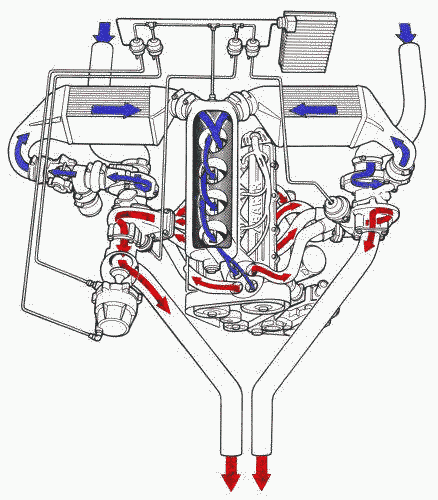
ECV comment form
For books on Lancia see our Online Bookstore
There is also a list of all our picture galleries (including museums, motorshows and various events).
Wallpapers/Desktop Backgrounds of numerous Lancia's are available to download.
See also our Lancia advertisements gallery, where several adverts can be seen.
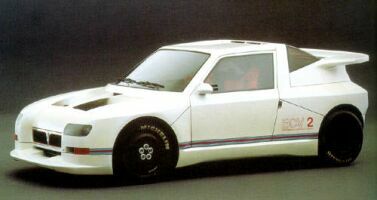
Use the buttons at the top to navigate further, or
Copyright © 2000 to 2008 CarsfromItaly